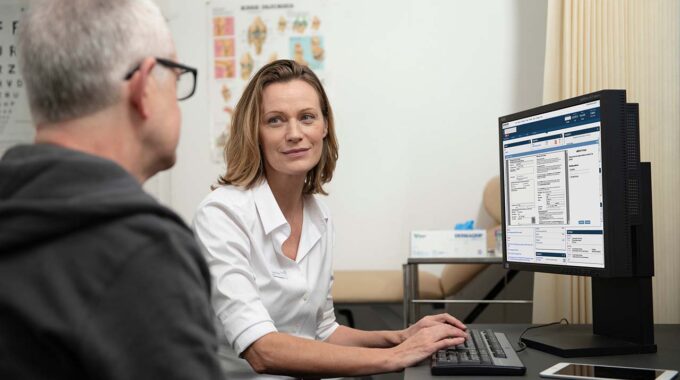Northampton General Hospital NHS Trust (NGH) has signed a ten-year contract with Nervecentre to implement…
Empowering Clinicians with Integrated communications
The recording and communication of patient observations data is a high priority for all NHS hospitals. At a national level, as many as one in four observations can contain an error of some description; information can either be incorrectly recorded or miscalculated, or deteriorating patients may not be appropriately escalated. Failure to rescue, or intervene in a timely fashion, is a leading cause of avoidable admission to critical care. Worse still, a 2005 NCEPOD study into patient outcomes and death found that delayed recognition culminating in late intervention and subsequent admission to intensive care had been avoidable in 21% of cases. Further, sub-optimal care had contributed to around a third of deaths, with poor communication between acute and critical care teams highlighted as a major contributory factor. Almost a decade later, the problem still remains. NHS hospitals’ ability to report, communicate and respond to deteriorating patients is a major national issue.
Guidance, governance and action to support the recording of vital signs is growing in prominence. NICE guidance sets out a clear framework for the recording of patient observations, while an increasing number of trusts are introducing CQUIN targets in this area. Moreover, in recognition of the multiplicity of early warning systems in different UK hospitals – sometimes, there are different systems within individual trusts – there has been a major effort to develop a uniform set of national standards, to drive a step change in the assessment and response to acute illness. The recent introduction of the National Early Warning Score, which provides standardisation of critical signs for acute patients, is a welcome and positive step forward. Early intervention can significantly reduce patient morbidity, mortality and length of stay – bringing associated economic benefits.
Systems to support the electronic capture of patient observations are further strengthening the NHS approach – providing a robust and reliable mechanism for recording information, and additional audit capabilities. But, with ‘recognise and rescue’ a major national patient safety priority, whilst e-observations present a major improvement on paper-based reporting, a move towards standalone systems risks placing an over-emphasis on recognition, but insufficient focus on rescue. The most effective systems will support escalation and trigger clinical activity – feeding into a task management system that enables clinicians to access live patient information, wherever they are in the hospital, and optimise their clinical workflow.
Fully integrated systems that combine electronic observations, handover data and task management can significantly empower the multi-disciplinary clinical team to make the best decision, and to ensure that interventions occur before patients deteriorate to critical levels. Moreover, such systems are there to support and facilitate decisions – allowing healthcare professionals and nursing teams to exercise their own clinical judgment.
A 2009 Nursing Times study into acute and emergency care showed evidence that poor practice in patient observations places patients’ lives at risk. Although the sector has made great strides forward in addressing this problem, more can be done to ensure that vital signs of patient deterioration are both recognised and responded to, as early as possible.
A simple solution to the problem already exists – and, though it is technology-led, it neither compromises nor replaces clinical decision-making. Integrated communications systems that encompass e-observations, mobile handover and task management can help the NHS reduce avoidable admissions to critical care. Integrated e-observations can reduce the risk of misreporting and miscalculation, provide governed reassurance that appropriate actions are being taken and improve escalation through the patient pathway. It is a simple way of reducing risk and improving patient safety. Furthermore, it is another step towards enabling the NHS to become paperless.




This Post Has 0 Comments